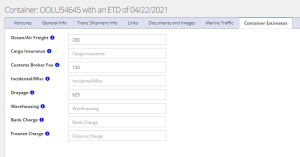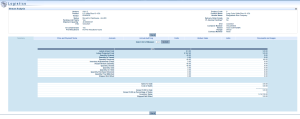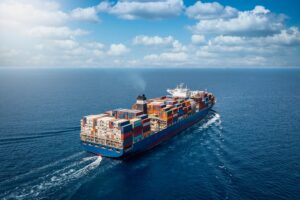VISCO is often used in tandem with an integrated accounting software like Quickbooks or Great Plains. VISCO itself does not track or store payment information, or link to bank accounts. The value of entering costs in VISCO is that the system allows companies to get accurate landed cost data on each lot or shipment that is brought in.
VISCO cost entry is very sophisticated so in order to demonstrate a variety of options I’m going to break this post into two different sections.
- Accruals
Accruals in VISCO are items that act as place holders for costs that will later be applied. The idea being that the items will be accounted for when giving a landed cost even before the costs have formally been entered. That way you are always looking at the most accurate estimated landed cost of a product. Accruals may take into account miscellaneous charges like freight, warehousing, drayage and etc. It also accounts for the total amount of the material from the Purchase Order.
We have at many times created customizations for automatic accruals to not only act as place holders but as a reminder of what to expect as an outgoing cost. The system will alert you when you enter a cost that exceeds the estimated or accrued amount to avoid accidentally overpaying. A good example of this is automatically doing a percentage of material on an entire container for the harbor maintenance fee.
On the container or B/L itself in VISCO you can apply a number of different charges that will provide an accrual. The items below come standard, but we can add as many estimated charges as you need.
These items are then visible in a report called ‘Venture analysis’ which gives you an overview of a specific shipment’s (what we call a venture number’s) costs and accruals:
The ‘Venture Analysis’ report also shows you Landed Projected Cost and the Landed Actual Cost:
As costs are being applied to the ventures, the Landed Actual cost will calculate and the Accruals that were acting as place holders in the system will be overridden with the actuals.
2. Costs
Now that we have received a few vendor invoices, let’s discuss applying the actual costs in the VISCO system. In VISCO we call a group of invoices being applied against a single Container, Truck, Bill of Lading, Purchase Order, Venture Line, or even Customer Invoice a ‘Batch’. Each vendor invoice is applied within this batch as what we call a ‘Voucher’. The idea being that all costs entered; Material, Freight, Drayage and Custom Broker Fee are being easily applied to this one shipment of goods.
So, we create a batch of vendor invoices for our container. Then start entering the different individual invoices. The first ‘cost type’ I chose is for the inventory. I choose Material and it automatically brings up the General Ledger account that it will be posted into in Quickbooks or Great Plains. In this case it is ‘COGS’. I enter the amount I am being charged for this material:
Next, I am going to choose the distribution method. This means how I would like the $20,000 above to be broken out amongst the ventures on, in this case, my container. There are a few different types of distribution methods. The default available cost distribution methods include:
- CBM
- Quantity
- Weight
- Deposit Percentage
- Accrual Percentage
I then choose what entity I am distributing costs across. An entire Bill of Lading? A single item on a Purchase Order. More often than not, our customers are applying the costs to individual containers as seen below:
By Choosing container as my entity, I then can choose from any container in the system. Here I am sorting by the Estimated time of Arrival, so I see the most recent containers first:
If I click ‘Show Details’ I can see a break down of the products on that venture and the quantities associated with each. Again, we can also see the original Accrual.
At this point I can add another cost type to distribute against this container. In this case I am going to apply the ocean freight. We start to see a list emerge of the different cost we are applying to this shipment and how each will be distributed separately in order to give us the most accurate depiction of how much we are actually spending on a product- including material, freight and anything else we may need.












